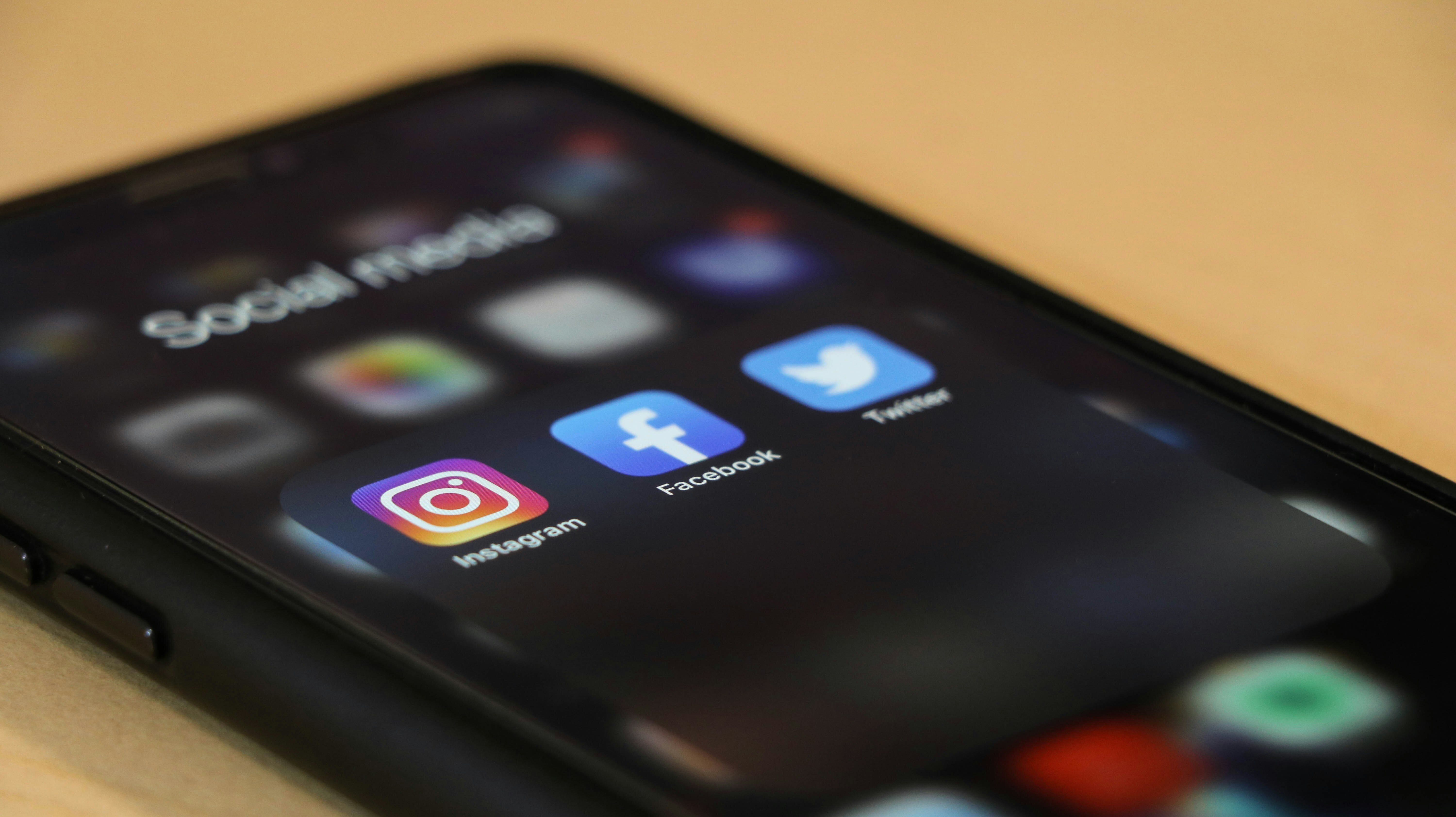3 min read
David vs Goliath Marketing Strategies – Part: 2 Mobilizing Media To Your Cause
by William Alverson (note: this is the 2nd in a five part marketing series from Will Alverson. Part 1 can be found here) Marketing your insurance...
6 min read
William Alverson : Mar 14, 2025 4:07:30 PM

As an insurance industry leader, whether you run your own agency or MGA, are growing your insurtech, or are looking to capture market share from a major competitor, resource constraints are always a marketing challenge. Effective marketing is especially tricky in an industry where our competitors oftentimes have the budgets for primetime TV spots featuring endorsements from NFL superstars. To outmaneuver the competition requires a thoughtful strategy, which we have been covering in Part 1, Part 2, and Part 3 of this series so far.
In Part 4, we’ll discuss social media strategy.
Social media is, at the end of the day, a distribution channel for all of your other marketing and communications content. While posting to your socials can oftentimes feel like screaming into the void, there are a few tricks you can use to grow your audience and keep them engaged.
There are plenty of “hacks” for social media growth and theories about how the algorithms on each platform work. As a marketer, I won't write these things off, but at the end of the day, fundamentals win. I’ll make those fundamentals simple for you here: The most basic formula for LinkedIn growth is the same for Tik Tok, YouTube, X, and Instagram…
(Volume x Time) / Percentage Consistency = Growth
Posting more frequently for a longer period of time while maintaining consistent messaging and post times will grow your audience. So be patient, and use the spoke and wheel method discussed earlier to ensure consistent output is reasonable over time.
While social media accounts are a place to share your content; be it blog posts, podcasts, or videos, it’s important to have at least some unique elements to your social media. Keeping just enough unique content on each platform will keep people around and incentivize them to continue following them on multiple platforms. This can be as simple as including holiday posts, or sharing the details of an upcoming conference. There are also different ways to deliver the same content on different platforms. While you might post a long form video podcast on YouTube, short clips should go on Tik Tok, a thread of insights with a link to YouTube as the final post will do well on X, and a mix of video and text should perform best on LinkedIn.
Do you ever wonder how some social media influencers grow to millions of followers seemingly overnight while others struggle to get off the ground, even when their content is relatively similar? Having run a popular food instagram page before (a story for another time…) I’ll let you in on some secrets used by top tik tok and instagram influencers to grow large followings.
Besides consistently posting quality content and keeping your engagement up, getting your message across to other audiences is like throwing on the afterburners for your social growth. Here’s how it works; if two influencers post content together, they expose their audiences to the other’s content, helping each other expand their reach in a short amount of time. So how do you put this into practice for an insurance business?
Both creating consistent content and networking regularly can take a lot of effort, but what if you could kill two birds with one stone? Collaborating with guests for topics and insights can be a great way to make content creation easier, forge connections, and reach new audiences.
Not sure what to write about? Reach out to an industry leader to be featured on your blog/ podcast and publish a brief interview with them. By doing so, you’ve made a stronger connection within the industry, you’ve let their insights guide your content, and your message will now reach their audience while they get new exposure from you as well.
You can also flip this equation around; reach out to podcasts about being a guest, or offer to contribute an article to an industry publication to reach new audiences and grow your brand. The publisher gets your insights, you get their audience. It’s a win-win formula.
In my opinion it’s not worth your time or energy to attempt to be on every platform right away. Being consistently active on your socials is key to growing your presence, so pick fewer platforms that you can really dedicate yourself to. You can always pick up additional platforms later on once you have mastered one or two, and you’ll find this will give you a strong platform to launch on other platforms later on. Mastering one or two platforms and streamlining your process around content creation before moving to another platform has worked best for me.
Here’s a few considerations for social media platforms and how to best use them:
Linkedin is a must have and a great place to share all of your thought leadership, updates, hiring, and news. While this is a good place to share all different types of content, there’s some tricks to maximizing the value. On the most basic level, it’s important to understand that LinkedIn will prioritize content that is actually on LinkedIn, whereas posting links tends to be shown less. Fortunately, there are some tricks to get around this.
When sharing blog posts, don’t just post the link to your blog page. Use Linkedin’s blog post feature to share the first paragraph or two of the article, then link to the full article on your blog. At Insurance Nerds, we tend to get the best response to posts shared through our LinkedIn Newsletter; another feature to consider as an alternative to an email list. When it comes to sharing podcasts, we tend to post the featured image from the episode with the episode details, and post the actual link to the show in the comments.
LinkedIn has also rolled out a video feature similar to YouTube shorts and Tik Tok, so there’s an opportunity to post to three different places with the same content.
Another thing to prioritize is to invite your connections to follow your company page. Linkedin will allow you to send up to 100 invites a month and this is an easy way to get some traction.
Yes, I’m finally getting comfortable saying X instead of Twitter…
X is full of niche business communities. Despite whatever the headlines say, the user base on X is highly engaged and extremely valuable. This is a great area to find potential clients, partners and even prospective hires. I have a friend with a distressed equity fund who both raised the majority of his fund via connections found on X, and sources over half of his deal flow from the app as well. It’s a powerful professional community, and insurance Twitter is very much alive and well.
Engagement and consistency is key to growth here. It takes time, so have an intern or associate spend some time daily liking relevant tweets and engaging with your audience directly if possible.
For the best results on X, threaded posts with photos and videos will get the most exposure. It’s also worth paying the $8/month for premium, as the platform will prioritize content from these accounts and help you grow as fast as possible.
Facebook would not be on the top of my list, but you know your customers better than I do. For older audiences, this is still extremely popular, and if your organization is looking to build or maintain close community relationships, it can be a great place to do so. Millennials also like facebook groups for a sense of online community, and groups can be great for promoting events as well. The other benefit to Facebook is their powerful ads network. If you are focused on marketing directly to consumers or small businesses, Meta’s ads system is extremely powerful.
As a primarily B2B marketer, I’m not an expert here, but if you choose Facebook, my advice would be to focus on community engagement, participate in groups, and consider creating your own facebook group.
If you are planning on hosting a podcast, you should absolutely plan on making it a video podcast, giving people the option to listen to audio only (hosted through a platform like buzzsprout) or to follow along via video. YouTube videos are extremely easy to share to LinkedIn or other platforms, and the platform functions as a social media channel of its own just as much as it’s simply a place to host videos.
With the addition of YouTube shorts to the platform, YouTube now has a dedicated space for short form video, which will help you to grow faster through more impressions on shorter content (as we discussed in part 1 of this series). In an effort to keep up with the rapid growth of Tik Tok, YouTube shorts and LinkedIn’s video features are rewarding consistent content creators with lots of views, making this a great opportunity to build a following.
If you are running YouTube shorts, you might as well post the videos to Tik Tok as well, as the format is pretty much the same. While I personally am not the biggest fan of Tik Tok and the data privacy concerns are very legitimate, it is objectively the easiest platform to grow audiences on. I would recommend using Tik Tok if you are already planning on using YouTube shorts, and your customers are young or you are trying to recruit junior employees. But be warned; the platform prioritizes creators who put out a LOT of content; many marketers say putting out three posts per day is the right target.
Stay tuned for Part 5 of this series, where we will discuss how to tie all of these concepts together using email, lead magnets and effective calls to action.

3 min read
by William Alverson (note: this is the 2nd in a five part marketing series from Will Alverson. Part 1 can be found here) Marketing your insurance...

4 min read
Are you wasting your money on promotional marketing? by Ben Baker Photo Courtesy of Xperience PromotionsThis article has to start with a...

4 min read
Fractional CMOs: The Solution to Marketing Efficiency in Year One and Beyond” by Ben Baker and Nicholas Lamparelli If we are not telling the...